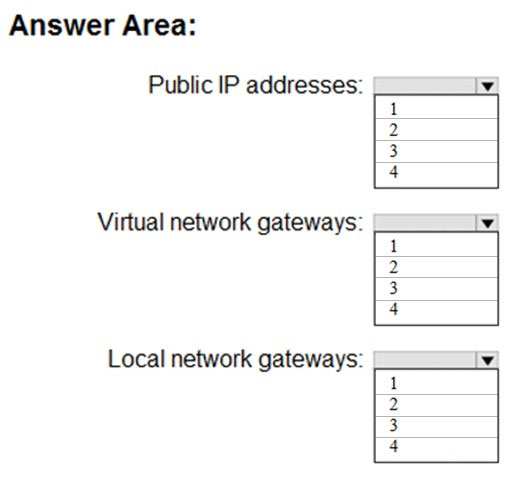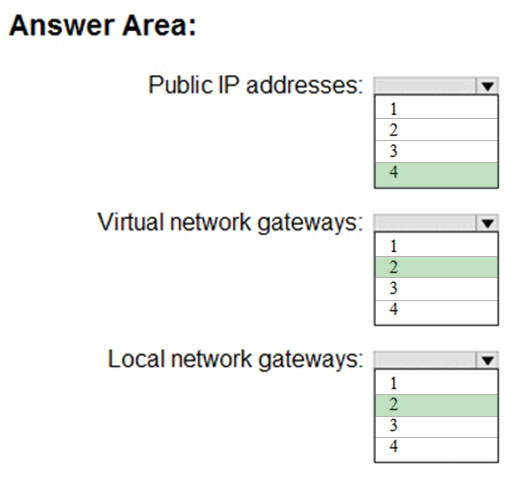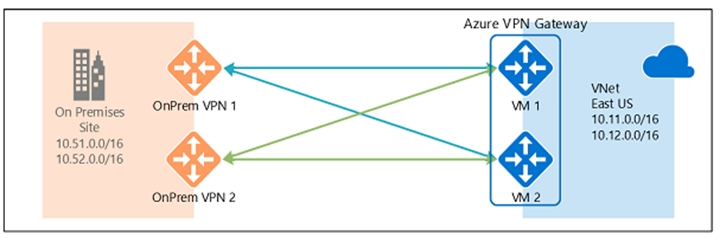

HOTSPOT -
You have an on-premises data center and an Azure subscription. The data center contains two VPN devices. The subscription contains an Azure virtual network named VNet1. VNet1 contains a gateway subnet.
You need to create a site-to-site VPN. The solution must ensure that if a single instance of an Azure VPN gateway fails, or a single on-premises VPN device fails, the failure will not cause an interruption that is longer than two minutes.
What is the minimum number of public IP addresses, virtual network gateways, and local network gateways required in Azure? To answer, select the appropriate options in the answer area.
NOTE: Each correct selection is worth one point.
Hot Area:


Aghora
Highly Voted 4 years, 6 months agosnobrega
Highly Voted 4 years, 7 months agoheamgu
4 years, 3 months agomedi01
3 years, 11 months ago[Removed]
3 years, 8 months agoItboss
Most Recent 3 years, 6 months agoArunTG
3 years, 6 months agorabindra_barik
3 years, 7 months agoDerekKey
3 years, 9 months agoeuve
3 years, 9 months agoeuve
3 years, 9 months agochupacabra
3 years, 9 months agostudent22
3 years, 9 months agoMadball
3 years, 11 months agotteesstt
3 years, 11 months agomooni
4 years agoanupam77
4 years, 1 month agotita_tovenaar
4 years agochupacabra
3 years, 9 months agoSteveChai
4 years, 1 month agoPengPai6
4 years, 2 months agoJasper666
4 years, 3 months agoBeitran
4 years, 3 months ago